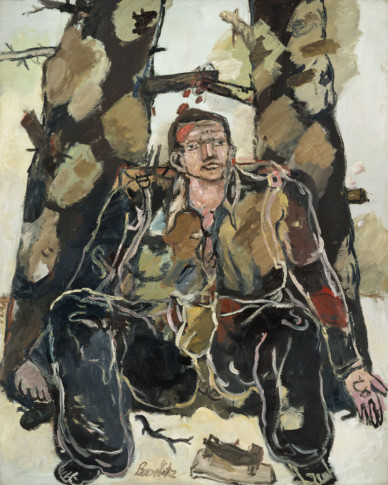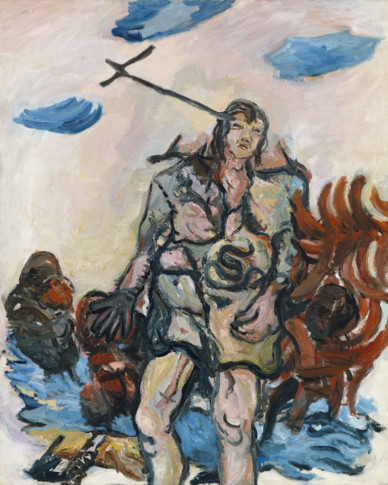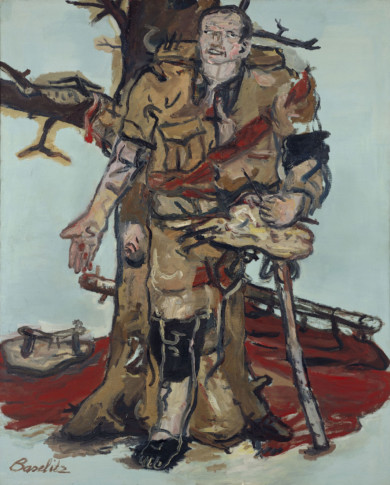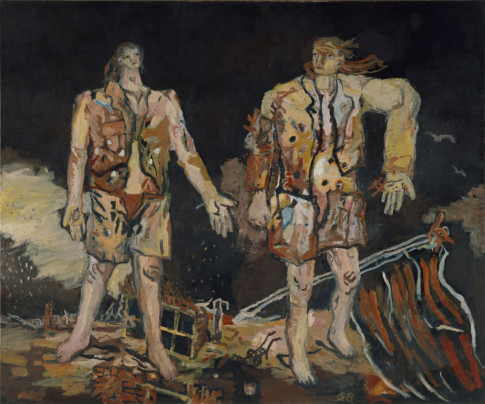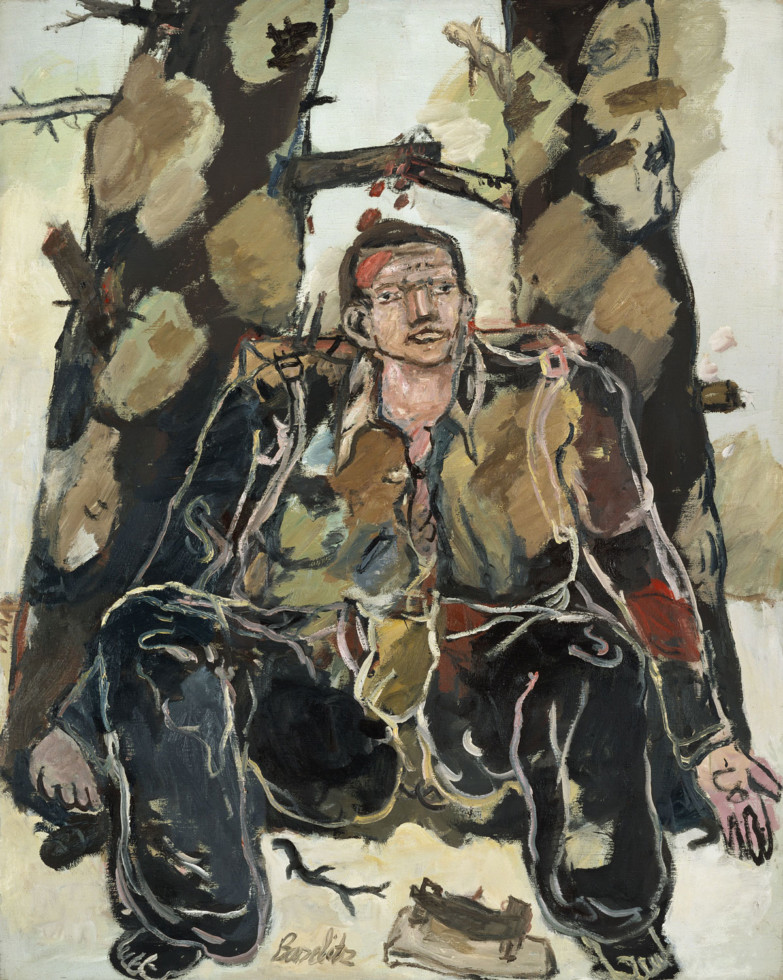
Georg Baselitz, Falle, 1966 © Georg Baselitz 2016
About the exhibition The Heroes
Georg Baselitz at the opening of his exhibition in Frankfurt
Georg Baselitz is regarded as one of the most important European artists of the post-war era. But in 1965-66, when he created the paintings that came to be known as Heroes and New Types, he was only 27 and had made very few, albeit widely acknowledged, appearances on the German art scene.
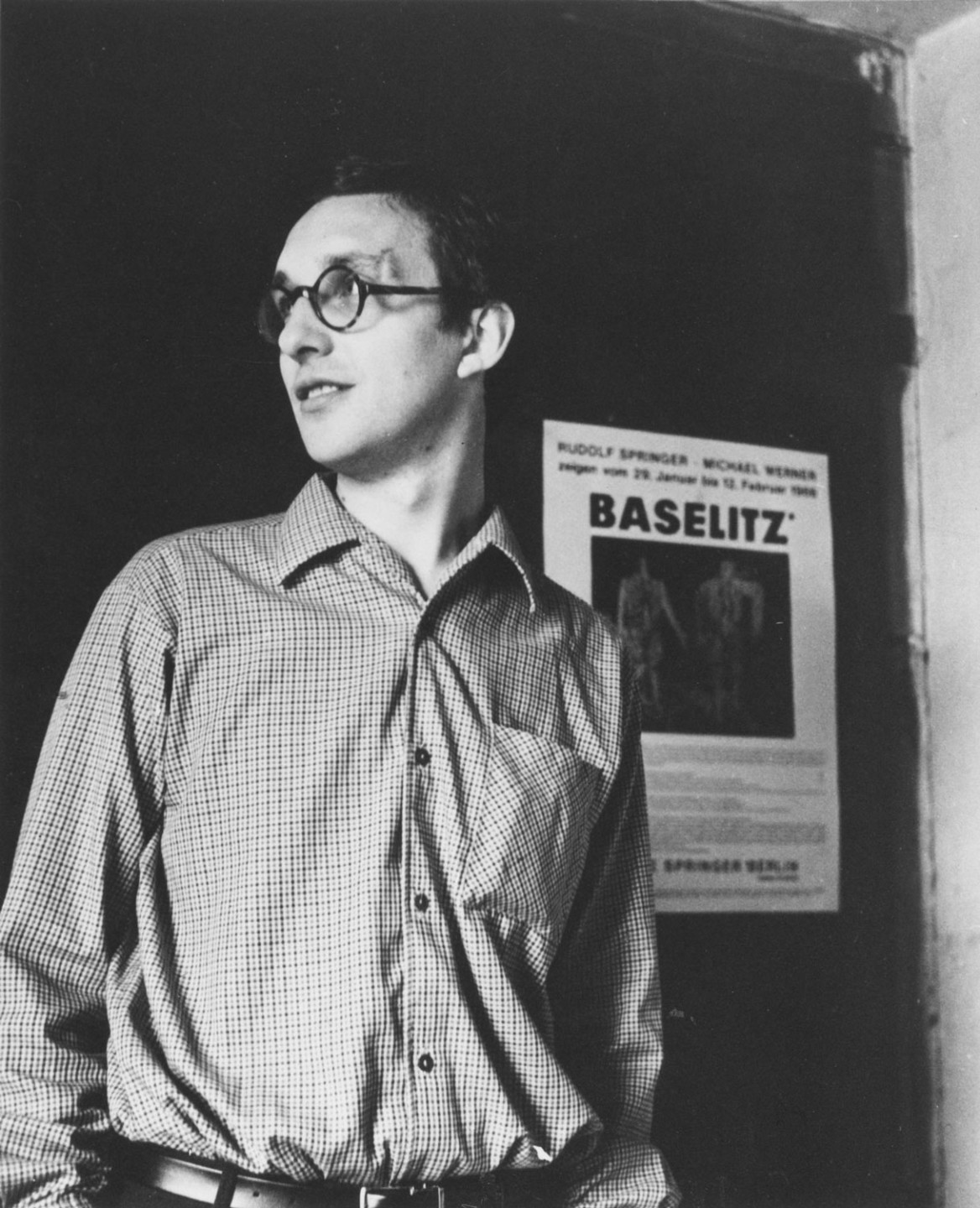
Delved in a disowned past
The artist was still young when he left East Germany, where art was supposed to be programmatic and edifying. The social realism that the government prescribed should express faith in the future. In 1965, West Germany was also in a period of newly-awakened optimism, referred to as the German Wonder. Baselitz’s paintings delved into a past that many preferred to disown at the time. As a student in East Berlin, he was branded as “sociopolitically immature” and relegated from his art college. He moved to West Berlin, where he continued his studies. An exhibition of Pollock, de Kooning and other abstract expressionists made a strong impact. By the mid-1960s, the dominating tendencies in American art were the polished surfaces of pop art and minimalism; this did not resonate with Baselitz either. His paintings were criticised for being anachronistic, retrograde. In connection with his first gallery exhibition in the West, two paintings were confiscated by the prosecutor’s office for being offensive.
Mannerism and disharmony
He embarked on Heroes shortly after his artist residency at Villa Romana in Florence, where he studied mannerist prints. This period in Italian art history was long considered to be a decadent aftermath of high renaissance, where nature studies, that is, painting after a nude live model, were succeeded by more disharmonious compositions with contorted bodies. Baselitz felt a kinship with this “degenerate” style.
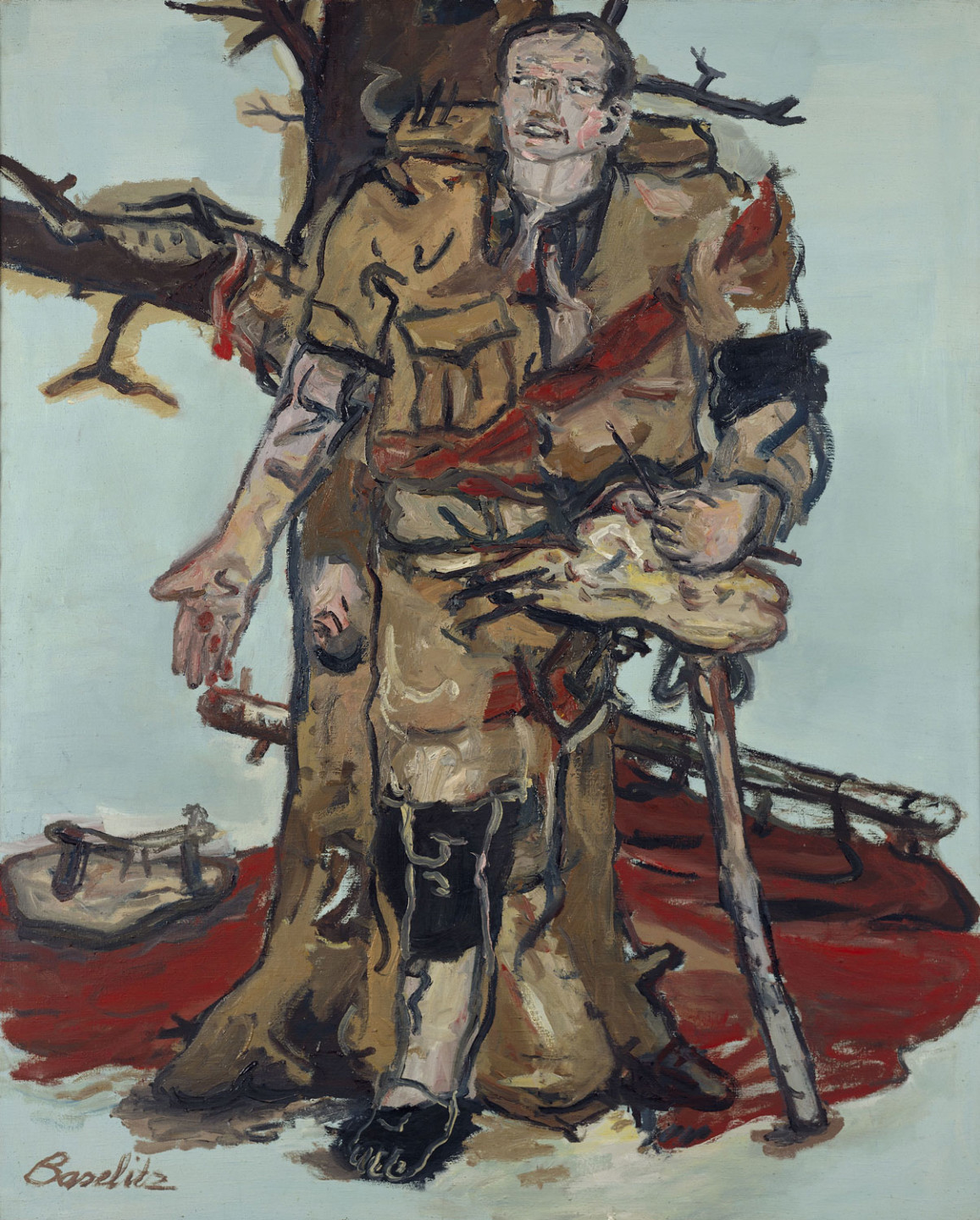
I am a German artist, and what I do is rooted in the German tradition. It’s ugly and expressive”
Lost heroes
Heroes and New Types are raw and expressive paintings portraying broken, vulnerable men in apocalyptic, ravished landscapes. In nearly every picture, a solitary male figure fills the entire surface. They look gigantic, awkward and slightly twisted, with their small heads and ragged clothes, exposed. The earthy shades of red, pink, brown, green and ochre are applied in impasto layers, occasionally drawn with thick contours. “I am a German artist, and what I do is rooted in the German tradition. It’s ugly and expressive”, he once said in an interview. Baselitz’s heroes are failed, tragic figures. They are lonesome, aimless and lost. Some have their fingers stuck in some kind of traps. Others drive wheelbarrows, which are scattered on the ground, along with other simple tools. A few wield a red flag, folded so we can’t see if it has a Nazi swastika in the middle or if it is a Soviet banner.
Fracture paintings
Towards the end of the exhibition, we find a few so-called Fracture paintings. In these works, the motif is broken up into fields. From a distance it looks like the canvas has been cut up and put back together again, but the seams are painted. The perspectives are shifted and some parts enlarged, as though the viewer has moved to a different vantage point. The fractured pictures enhance the feeling of brokenness, but they also further reduce the realism and make the paintings more abstract. Three years later, Baselitz made it even harder to identify his motifs, by turning the paintings upside down, an apparently simple gesture that is nevertheless ambiguous.
A lonely position
Baselitz has repeatedly expressed his loathing of all ideologies. To stand outside ideologies is a lonely position. Several paintings in the Heroes series are titled Rebel, but there is also one called A Modern Painter, and it is easy to associate this wounded warrior with artists. The link between the roles of outsider, artist, and scarred hero is romantic and complex, and was ridiculed even in 1965. Baselitz has often taken a provocative and deeply critical stand against established truths and flock mentality, and has opened the way towards a remarkable and brilliant painterly practice.
Baselitz has come to have a profound influence on later generations of postmodernist and neo-expressionist “wild” artists. The exhibition Heroes is the first to focus on the artist as a young man and his controversial breakthrough.

